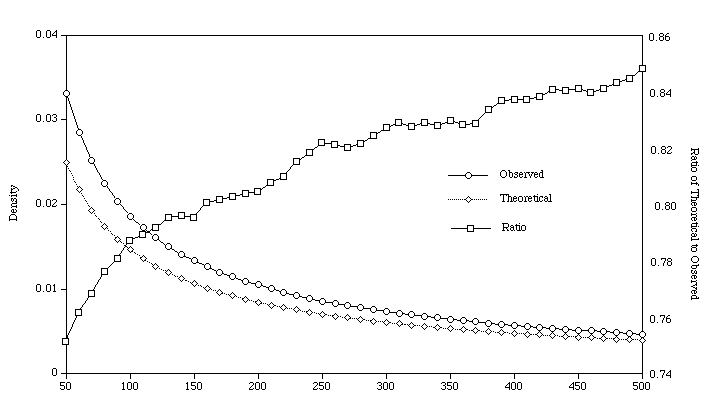In a coalescing random walk, each particle independently performs
a random walk subject to the collision rule that when one particle
jumps onto an already occupied site, the two particles coalesce to one.
Bramson and Griffeath (1980) showed that for simple random walk
in two dimensions p(t) is approximately (log t)/(pi t) for large t.
The next graph compares p(t) and the asymptotic formula for
times between 50 and 500.

Use BACK on your browser to return to where you came from.
